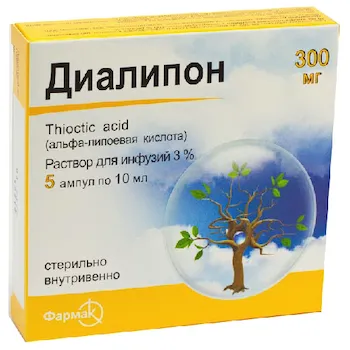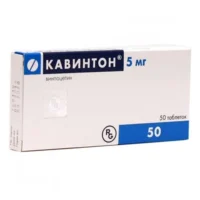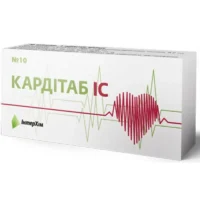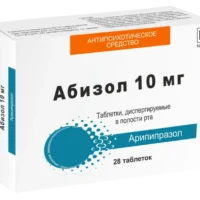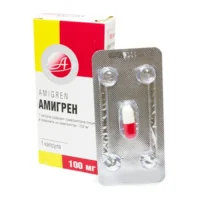Description
Dialipon (Thioctic Acid) Ampoules 3% 10 ml. №5
Ingredients
Active ingredient: Thioctic acid 3%
Mechanism of Action
Thioctic acid, the active ingredient in Dialipon ampoules, exerts its pharmacological effects by acting as a potent antioxidant. It functions by scavenging free radicals, aiding in the regeneration of other antioxidants in the body, participating in cellular energy production, and possessing anti-inflammatory properties.
Indications
Dialipon ampoules are specifically formulated for conditions requiring supplementation with thioctic acid.
Contraindications
Avoid using Dialipon ampoules if you have a known allergy to thioctic acid or any other components of the product.
Side Effects
While generally well-tolerated, some individuals may experience mild side effects like nausea or stomach discomfort. It is advisable to consult a healthcare professional before initiating treatment.
Usage Instructions
Administer Dialipon ampoules according to the healthcare provider’s guidance. Typically, it is given via intramuscular or intravenous injection.
Benefits Compared to Analogues
Dialipon stands out from its counterparts due to its thioctic acid composition, which has been extensively studied for its antioxidant properties and potential therapeutic benefits in various health conditions.
Suitable Patient Groups
Dialipon ampoules are suitable for a wide range of patient groups, including adults, children, and the elderly, under appropriate medical supervision.
Storage and Shelf Life
Store Dialipon ampoules as per the instructions on the packaging. Ensure proper storage conditions to maintain the product’s efficacy. Check the expiration date before use.
Packaging Description
Dialipon ampoules are available in a pack of 5 ampoules, each containing 10 ml of 3% thioctic acid solution.
Clinical Evidence and Proven Effectiveness
Thioctic acid has been the subject of numerous clinical studies demonstrating its efficacy in various health conditions. For instance, research indicates that thioctic acid supplementation can enhance insulin sensitivity, reduce inflammation, and combat oxidative stress. Clinical trials have shown promising results in diabetic neuropathy and liver diseases, highlighting the therapeutic potential of Dialipon ampoules.

